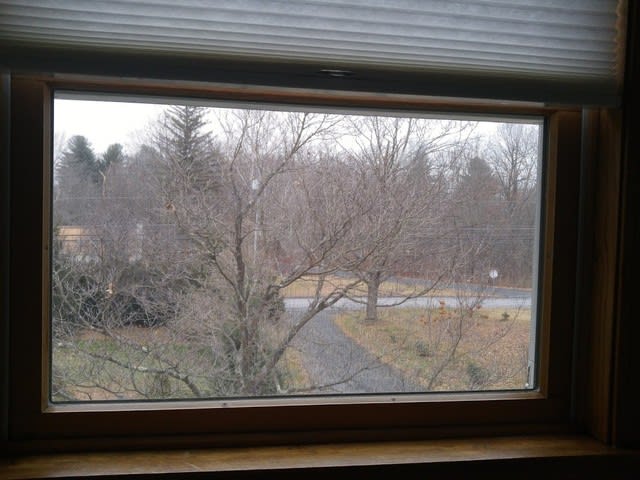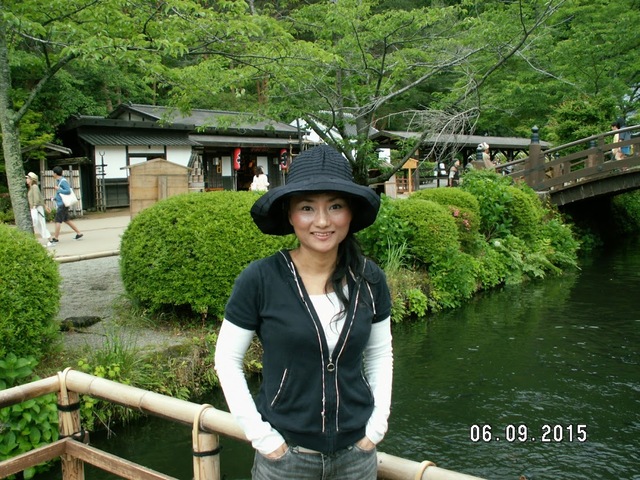
結局、私は南師から翻訳の承諾を得たが、
当時の1年半前の私には彼の本を訳せる能力が無かった。
Eventually, I obtained master Minami’s consent for his book translation
but my ability of translate was not ready yet
at that time a year and half ago.
だが、その面談によって
私はやるべきことが設定でき、
翻訳を起動させるタイマーをオンにできた。
But I could set what I have to do from the meeting with Minami Jikisai
and the timer was turned on to activate translate work.
私が翻訳について決めている方針は一つだけだ。
There is only one policy I decided to do for a translation.
訳した文から翻訳者の存在を限りなくゼロにする、それだけだ。
It is to lose no meaning in the translated sentences.
原作者の視た世界を、
ただ言葉を変えてそのまま読者に見せる、それだけのことだ。
The world seen by the original author,
just show it to readers the way as it has been,
with only the language changed, that is for all.
そのためには、作者が言おうとする世界を、
ことばを超えて視られる内観が必要になる。
To be such, an insight that can go beyond words is needed
to be able to view the world which the author tries to paint.
英語で原作者の世界を写真のように写り、
他の言葉でプリントするだけのことである。
It is like picturing the original author’s world in English and just print out it.
偉大な画家は自分が視たビジョンを筆と絵の具を使って描ける。
A great painter can depict one’s vision by using brushes and colors.
その画家によって描かれた絵の空間には
筆や絵の具は道具としての役柄を完璧にこなしている。
In the painted space,
brushes and colors perfectly master their roles as a tool.
たが、普通の画家は
筆と絵の具を使える技術だけを見せびらかすため、
手段である道具が目的になってしまう。
However, an average painter just shows off brushing skills and tools,
so the utensils themselves become the purpose.
通訳者に求められる素質の一つに
画家が駆使する筆や絵の具の使い方のように、
ことばをどう使うかの見方が根本的に問われる。
One of the required qualities for a translator,
just like a painter commends how to use brushes and colors,
is perspective of how words are fundamentally being questioned.
一枚の絵に筆や絵の具の使い方は陰になるべきで、
技術が表で圧すると絵の世界に入れなくなり逆に邪魔になる。
Using method of brushes and colors for a painting,
it should be shadow but if a skill dominates at front,
conversely it obstructs insight or view of the painting.
翻訳者は言葉の表現に対して限界を持っていてはいけない。
Translator should not have boundary against expression of words.
99%の正確性は許せない、
常に100%正しくいなければならない。
99% accuracy should not be forgiven,
always must be 100% correct.
私はその100%に未だに達していない。
Yet, I have not reached that 100%.
だが、限りなく100%になるための挑戦を
毎日、毎時間、毎秒やっている。
Even though, I have been challenging
infinitely to be 100%
every day, every hour, every second.
翻訳の承諾を得てから1年半が過ぎた。
A year and half has passed,
since I got consent for translation of his books.
そのためにまず、
私は私の脳内で行われる日本語から英語を通訳する過程を
無くせることを最初の目標にした。
To do that, as the first stage to clear was
removing interpretive process in my brain from Japanese to English.
ことばで表れている世界、
そのままを他のことばを持ち要って表す、
そのためには頭だけでことばを考えては邪魔になる。
The world represented by one language,
then expressed in another through mere brainy work,
it will end up an obstacle.
ことばを一々計算し、
事々分析しては道に迷うことになる。
Calculating words one after another and
analyzing one by one,
is a way to quickly get lost while still on the path.
私がこのシリーズを書こうと決心した理由は、
その脳内通訳通路がようやく消えて見えなくなり、
ことば自体が意識に昇らなくなったからだった。
The reason why I decided to write this series was
to overlook that the path of translating process in my brain was
finally gone from my sight and
the words no longer come to my conscious.
頭の中で通訳しなくなった状態にようやく辿りついたのである。
I finally reached a state where no interpreting functioned in my brain.
これが、私が踏むべき段階の2段階であった。
That was the second stage I had to clear.
最初の段階は南師からの翻訳承諾を得る、
それから翻訳者としての能力を定める。
The first stage was obtaining consent for translating
from master Minami Jikisai,
and then determining my ability as the translator.
次の段階はことばを他のことばに替えるだけだ。
The next stage will be stitching one language to another.





























stitching one language to another >>> stitching に、
私の英語は機械技術や工学、開発言語に類するマニュアルが素材の大半でしたので
こんな適切な表現があるとは教えられました、翻訳が楽しみです。
本棚も古いの新しいのと読み込まれている様子が窺え
本好きの私は手に取りたいような
「悪徳の栄え」の背表紙も、泉 鏡花賞を貰った澁澤 龍彥訳でしょうか。
遺作の高丘親王航海記も読んだような・・だいぶ前のあやふやな記憶です
課題を進めてゆきましょう。
写真を撮りながら
「悪徳の栄え」が分かる人はいないだろうな、と思って苦笑いしてました。
はい、澁澤 龍彥さんの本です。
その他、『サド復活』と昭和45年出版の『閨房哲学』を持っています。
28年前に友人が大学時代から持っていた本を
私にくれました。
28年前のことが
今、栄久さんによって
意識に昇ってきましたね。
なんて、奇遇でしょう。
私にとって歴史的な意味合いがあるのです。
大学の恩師の本とか
大学での教授の方々が書いた本とか、
南師の本は2冊を除いて全部揃いました。
送ってくださった日本アマゾンでも
『日常生活のなかの禅』は海外発送ができないようなので、
もう少し、他を調べているところです。
最悪、ここで注文できない場合は
栄久さまに頼むことになるかもです。
英訳は独学していた日本風の訳し方と
実際のアメリカ人に通じる英語には
大きな差がありますねえ。
夫は『歩く辞書』と私がニックをつけていますが、
彼が指摘してくれる英文法や表現は
私が勉強できるレベルを超えています。
私が辞書以外で使われている慣用例をきくと
辞書より詳しく説明してくれるから
私の英語編のバックサポーターは結構頼り涯が強いです。
栄久さんも
日本語編のバックアップになりつつあるようで
心強いですし。
The next stage will be stitching one language
to another.
での文章構造と「stitching」という単語のニュアンスと現在分詞としての用法が
(まあ誤表現とまでは言えなくても??)
何か日本風発想から来ている様に思えて仕方が無いのですが、
「歩く辞書」の御主人は何とおっしゃるのか
後学の為に是非知りたい処ですね。
一応stitchという単語を用いるとすると、
The next stage will be to stitch one language to another.
とか
The next stage will be the stitchings of one language to another.
ならどうでしょう??
『言葉を紡んで(つぐんで)、文章を編む』という言い方がありますが、
『日本語文章を、英語文章にstitchする』という論理的イメージが湧きません。
どうもstitchという単語のニュアンスから文脈的に戸惑いが出る感じです。
桂蓮様のご解説を頂けたらありがたいです。
枝葉末節な文体・使用単語に至るまで、
熾烈な批判を加えられるという事はせん無いことであり、
翻訳者たらんとするものは、
自分の書いた文章に対して、他者の疑問・指摘に一つ一つ答えていかねばならない責務を持つ。
「日本語文章から英語文章に編み替える」という意味でしょうから、
その時の「編み替える」と言う言葉として
「stitch(stitching)」が妥当なのかどうか??
もし文脈が、
日本語文章を一旦分解して(=編糸をほぐして)、
それを英語文に「編み上げる、編み返す」という事なら、
『weave、weaving』という単語の方がニュアンスが通じる様に思われるのですがどうでしょう。
ちなみに『weave』には自動詞と他動詞がありますが、編み替えるという事なら、自動詞用法を使って、
「My next step is to weave from one language to another. 」とするのはどうでしょう。
対象アメリカ人(読み手)は桂蓮さんの御主人のような知的な人を納得させ得るクオリティーに仕上げて頂きたい。
ただそれだけです。
無学無能なミソ糞の区別のつかないアメリカ人向けの書物では無いと思うからこそのクレイムということで御理解いただきたいですね。